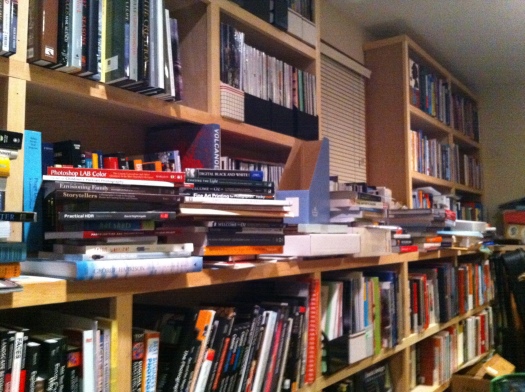As you can probably tell from the photo above, my book collection is getting a little out of control. While I would have a hard time paring it down and parting with any of the books I thought that it would be a fun exercise to select 25 ‘how-to’ books to hang on to. I decided to select a set of ‘how-to’ style of books. Some a very practical nuts and bolts of how to use Lightroom or Photoshop, some point the way ‘how-to’ using examples from the authors, some feature exercises designed to help you find your way of capturing images, some ask more questions than they answer and finally some help with talking about your work and sharing it with the world. These are all books that I still find useful, although not necessarily ones that I would recommend to someone who’s just picked up a camera. I’m sure this would be different to your list and would be happy to hear what you would have included. A ‘top ten’ from my collection of art books, monographs etc. in the coming weeks.
Scott Kelby’s 7-Point Sytem for Photoshop CS3
Adobe Photoshop Lightroom – Martin Evening
Adobe Photoshop Lightroom – Scott Kelby
Adobe Photoshop CS5 for Photographers- Martin Evening
Adobe Photoshop CS5 for Photographers: The Ultimate Workshop
Adobe Photoshop Masterclass: John Paul Caponigro
Welcome to Oz
The Photoshop Darkroom
George DeWolfe’s Digital Photography Fine Print Workshop
B&W Printing: Creating the Digital Master Print
The Photographer’s Eye
The Photographer’s Vision
The Photographer’s Mind
Visual Poetry
Photographing Childhood
Within the Frame
Visionmongers
The Moment it Clicks
Examples: The Making of 40 Photographs
Landscape Within
Landscape Beyond
Finding the Picture
Criticizing Photographs
Why Photographs Work
Publish Your Photography Book



